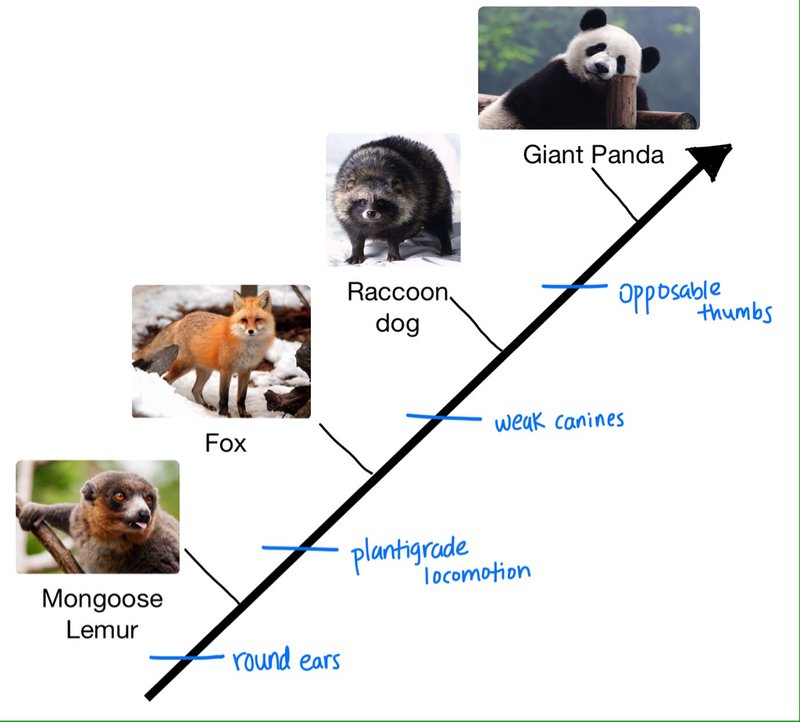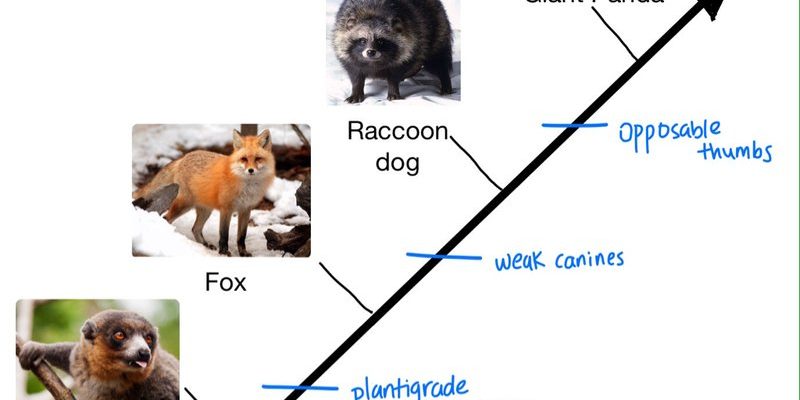
Gibbons belong to the family Hylobatidae and are often found in the lush tropical forests of Southeast Asia. They are unique among primates for their monogamous social structures and incredible vocalizations. Think of them as the melodious songbirds of the primate world. Their evolutionary journey not only sheds light on how these agile acrobats adapted to their environment but also offers insight into the larger story of primate evolution. Let’s take a closer look at how gibbons came to be and what makes them so special.
Origins: Where Gibbons Come From
Gibbons trace their roots back to the early days of the primate family tree. Approximately 20 million years ago, as the world was undergoing significant changes, gibbons branched off from their relatives, the great apes and humans. This split was part of a larger evolutionary process that saw various primate species adapt to their environments in unique ways.
Fossil evidence suggests that gibbons evolved in the dense forests of Southeast Asia. Imagine them swinging through the trees, using their long arms to navigate the complex canopy. This adaptability is key to their survival and is a hallmark of their evolution. Unlike other primates, gibbons developed a special form of locomotion called “brachiation,” allowing them to swing gracefully from branch to branch.
However, here’s the thing: gibbons are not just a single species. They comprise several genera, including Hylobates, Symphalangus, and Nomascus, each with its distinct characteristics and behaviors. The diversity among gibbon species illustrates how evolution has shaped these fascinating creatures in response to their environments.
Physical Adaptations: The Gibbon’s Unique Traits
One of the most striking features of gibbons is their incredible physical adaptations. Their long arms can stretch up to twice the length of their bodies, making them perfect for swinging through treetops. This adaptation is not just for show; it allows gibbons to cover large distances in search of food and evade predators.
Gibbons also have an upright posture, giving them a unique way to move when they’re not swinging. While they typically use all four limbs to navigate their arboreal homes, you’ll often see them standing or sitting in a way that showcases their balance and flexibility. This dual approach to movement is a brilliant evolutionary strategy that keeps them safe and agile in their natural habitats.
Another interesting characteristic is their vocalizations. Gibbons are known for their loud, melodic calls that can be heard from miles away. These songs play a crucial role in marking territory and strengthening social bonds. In a way, their voices are as important as their physical adaptations, allowing them to communicate effectively in dense forests where visibility is limited.
Social Structures: Gibbons in the Wild
Gibbons are fascinating not just for their physical abilities but also for their social structures. Unlike many other primates that live in large groups, gibbons tend to form monogamous pairs. This means a male and female gibbon will mate for life and raise their offspring together. This unique social structure sets them apart in the primate world.
Within these pairs, you’ll often see strong bonds formed between mates, showcasing their cooperation when raising young. Parenting in gibbon families is quite hands-on. Both parents work together to care for and teach their offspring, helping them develop the skills they need to thrive in their environment.
Now, you might be wondering why such a social structure is beneficial. Monogamous pair bonds allow gibbons to maintain stable territories and decrease competition for resources. This stability is vital in their often unpredictable forest homes, where food sources can vary seasonally. By working together, gibbon families can effectively defend their territory from intruders, ensuring their survival.
Conservation Status: Challenges Facing Gibbons
As enchanting as gibbons are, they face significant challenges in the wild. Habitat destruction is one of the biggest threats to these primates. As forests are cleared for agriculture, logging, and urban development, gibbons find it increasingly difficult to survive. Their homes are shrinking, and many species are now on the brink of extinction.
Illegal hunting and the pet trade pose additional risks. Gibbons, with their captivating looks and playful nature, are sometimes captured and sold as pets. This practice not only jeopardizes their populations but also disrupts their social structures. Imagine a young gibbon, raised in captivity, missing out on learning essential survival skills from its parents.
Conservation efforts are vital to protecting gibbons and their habitats. Organizations around the world are working tirelessly to raise awareness and create sanctuaries for these endangered creatures. Supporting these initiatives can make a real difference, helping to ensure that future generations can enjoy the beauty and wonder of gibbons in the wild.
The Future of Gibbons: What Lies Ahead
So, what does the future hold for gibbons? It’s a mixed bag. On one hand, the ongoing destruction of their habitats presents a dire outlook. On the other, there’s a growing movement focused on conservation and education. More people are becoming aware of the plight of gibbons and are advocating for their protection.
Innovative solutions, such as creating protected areas and promoting sustainable practices in forestry and agriculture, are key to ensuring their survival. Additionally, ecotourism can provide an economic incentive for local communities to protect gibbon habitats. When people understand the value of conserving these amazing creatures, it can lead to a brighter future for them.
It’s important to remain hopeful. Gibbons have proven to be resilient throughout their evolutionary history. With concerted efforts from conservationists, governments, and the public, there’s a chance to secure a future where gibbons can thrive in their natural habitats once more.
In conclusion, the evolutionary history of gibbons is a testament to the wonders of nature. Their unique adaptations, social behaviors, and the challenges they face remind us of the complexity and fragility of life. By understanding their story, we can play a part in their future, ensuring that these incredible primates continue to swing through the forests for years to come.

